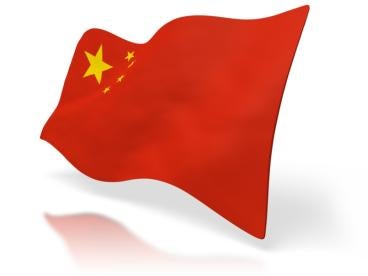Securities
Three Departments Issue New Provisions on QFIIs and RQFIIs to Relax Access Conditions and Expand Investment Scope
三部门发布QFII和RQFII新规,放宽准入条件并拓宽投资范围
Qualified Foreign Institutional Investors (QFIIs) and RMB Qualified Foreign Institutional Investors (RQFIIs) are two important channels for foreign investment in China’s securities market. QFIIs, introduced in 2002, let foreign funds invest onshore in China’s A shares. RQFIIs, introduced in 2011, give investors access to offshore RMB to buy China’s A shares. However, the regulations for these mechanisms have not been amended for many years. With deepening financial reform, the QFII/RQFII mechanisms have become outdated and less attractive as compared with new investment channels such as Shanghai-Hong Kong Stock Connect and Shenzhen-Hong Kong Stock Connect, which allow mainland investors to transact in Hong Kong-traded stocks, and for foreign investors to buy and sell equities in Shanghai and Shenzhen without requiring licenses granted by currencies or securities regulators.
In May 2020, the People’s Bank of China (PBOC) and the State Administration of Foreign Exchange (SAFE) issued Administrative Provisions on Funds Used by Foreign Institutional Investors for Domestic Securities and Futures Investment (Announcement No. 2). Announcement No. 2 removes the restrictions on the investment quota of QFIIs/RQFIIs. Accordingly, qualified investors will no longer need to apply for any investment quota from SAFE. Moreover, Announcement No. 2 adopts a series of measures to make convenient inbound fund and outbound income remittances.
On Sept. 25, 2020, the China Securities Regulatory Commission (CSRC), PBOC, and SAFE jointly issued Administrative Measures for Domestic Securities and Futures Investment Made by Qualified Foreign Institutional Investors and RMB Qualified Foreign Institutional Investors, to further improve the QFII and RQFII system. On the same day, CSRC also issued a supporting regulation on certain details (together, New QFII/RQFII Rules). The New QFII/RQFII Rules and Announcement No. 2 could revitalize the QFII/RQFII system. Below is an introduction regarding two major features of the New QFII/RQFII Rules.
Enlarging the Investment Scope by QFIIs and RQFIIs. Apart from stocks, bonds, stock index futures, and securities investment funds currently opened to QFIIs/RQFIIs, the New QFII/RQFII Rules further allow QFIIs/RQFIIs to invest in securities listed in National Equities Exchange and Quotations (more widely known as NEEQ or New Third Board), financial futures, commodity futures, options, depositary receipt, bond repurchase, securities margin trading, asset backed securities, etc. In addition, QFIIs/RQFIIs may invest in a private equity fund whose investment scope is identical to the foregoing financial products.
Lowering the Barriers to Market Access
The New QFII/RQFII Rules only maintain requirements such as stable financial position, good credit record, sound and effective governance structure and internal control systems, etc. on applicants for QFIIs/RQFIIs, and no longer maintain the requirement of minimum paid-in capital and operating years of the applicants. However, the New QFII/RQFII Rules also require that the applicant not impose a significant impact on the Chinese capital market, by which the CSRC may reserve certain degree of discretion on a case-specific basis.
Foreign Direct Investment 2020 Edition of Catalogue of Industries for Encouraged Foreign Investment Effective from January 2021 2020
版《鼓励外商投资产业目录》自2021年1月27日起施行
After reviewing public comments, on Dec. 27, 2020, the Ministry of Commerce and the National Development and Reform Commission (NDRC) jointly announced the 2020 Edition of Catalogue of Industries for Encouraged Foreign Investment (2020 Catalogue), which will supersede the 2019 Edition of Catalogue of Industries for Encouraged Foreign Investment and take effect starting Jan. 27, 2021.
In 2019, the NDRC and the Ministry of Commerce combined the Catalogue for the Guidance of Foreign Investment Industries and the Catalogue of Priority Industries for Foreign Investment in the Central-Western Region for the first time. Prior to the combination, such catalogues were amended every three to five years. By contrast, the interval between the release of the 2019 Edition of Catalogue of Industries for Encouraged Foreign Investment and the 2020 Catalogue was only one year. The 2020 Catalogue is an important measure for China to further stabilize foreign investment.
The 2020 Catalogue includes 1,235 entries, adding 127 entries to the 2019 Edition of Catalogue of Industries for Encouraged Foreign Investment, and amending 88 entries to expand their scope.
| 2. | Highlights of the 2020 Catalogue. |
Foreign investment is further encouraged in the advanced manufacturing industry. In the field of artificial intelligence, integrated circuits and other high-end manufacturing, the entries regarding integrated circuit packaging and test equipment manufacturing, laser projection equipment, ultra-high-definition TVs, respirators, ECMO, artificial intelligence-assisted medical devices are newly added or revised. In the field of new materials, the entries regarding high-purity electronic grade hydrofluoric acid, hydrogen fluoride, special glass fiber, polarizer substrate film, diffusion film, mask version, polyethylene polyamine, high-performance fibers are newly added or revised. In the field of green environmental protection, the entries regarding ship pollutant port reception and treatment facilities construction and equipment manufacturing, port hazardous chemicals, oil emergency facilities construction and equipment manufacturing are newly added.
Foreign investment is further encouraged in the modern service industry. In the field of research and development and design, the entries regarding the research and development of fifth-generation mobile communications technology, blockchain technology development, and design of sewage treatment facilities are newly added or revised. In the field of business services, the entries regarding high-end equipment maintenance, digital production line transformation and integration, industrial service network platform are newly added. In the field of modern logistics, the entries regarding bulk commodity import and export distribution centers, community chain distribution are newly added or revised. In the field of information services, the entries regarding new online education, online medical, and online offices are newly added.
Foreign investment is further encouraged in central and western regions. The entries regarding agricultural products processing and tourism development are newly added for provinces such as Heilongjiang and Yunnan. The entries regarding medical equipment, epidemic prevention supplies, and APIs production are newly added for provinces such as Henan, Shanxi, Guangxi. The entries regarding semiconductor materials and industrial ceramics are newly added for provinces such as Hubei, Sichuan, Chongqing. The entries regarding vocational colleges are newly added for provinces such as Anhui and Shanxi. The entries regarding commerce, shipping, finance, and tourism are newly added for Hainan, to support the development of Hainan Free Trade Port.
| 3. | Preferential Policies Can be Enjoyed. |
Qualified foreign investment in the fields covered by the 2020 Catalogue can enjoy the tariff-free policy for the imported equipment for its own use (which is within its total investment amount). The foreign-invested enterprises established in the western regions, doing business in the encouraged industries, can enjoy preferential tax policy for enterprise income tax at a reduced rate (i.e., 15%). The encouraged foreign-invested manufacturing projects (which requires intensive land use) can enjoy prioritized supply of land, at a reduced price (for which the bottom price of land transfer shall be no less than 70% of the minimum national industrial land transfer price for the corresponding grade/class of such land at the location of such projects).
Compliance China’s Revised Administrative Measures for Drug Registration Took Effect July 2020
新修订的《药品注册管理办法》于7月生效
The revised Administrative Measures for Drug Registration (revised AMDR) issued by the State Administration for Market Regulation (SAMR) came into force July 1, 2020. The revised AMDR is an important part of the PRC Drug Administration regime, which was set forth in the 2019 revision of the PRC Drug Administration Law. To encourage drug development in China, the revised AMDR introduced and simplified more than 20 procedures to smooth the way to bring new drugs to market.
Highlights of the revised AMDR are as follows:
- Clarifies Market Authorization Holder (MAH) system
Per the revised ADMR, MAHs refers to developers that have been granted drug registration certificates in China. Under this regime, contract manufacturing of drugs is permitted, meaning MAHs may outsource the manufacturing of approved drugs to qualified drug manufacturers located in China. For MAHs, this regime means the possibility of lower capital expenses to bring drugs to market as manufacturing may be outsourced. As a result, drug developers may better focus on research and development.
The revised ADMR also emphasizes responsibilities for MAHs, covering all aspects of the drug development and production process, including but not limited to responsibilities for non-clinical drug research, clinical drug trials, drug production and distribution, post-marketing drug study, adverse drug reaction monitoring, reporting and handling, etc.
Along with the current regime, the MAH could transfer the ownership of the commercialized drug to another MAH.
- Accelerates procedures for drugs registration
The revised ADMR implements changes to the drug approval regime. One chapter is added, and four accelerated approval pathways are established.
| – | procedures for breakthrough therapy designation drugs (BTD): the applicant may communicate with review personnel in the Center for Drug Evaluation of the National Medical Products Administration (CDE of the NMPA) directly during the critical phase of the drug clinical trial and may receive opinions on phased research materials from the CDE; |
|
| – | conditional approval for certain kinds of drugs: (i) drugs for life-threatening diseases for which no effective treatment is available; (ii) drugs urgently needed for public health, etc. With respect to drugs with conditional approval, the drug will be granted a registration certificate which indicates the validity period and other relevant information; |
|
| – | procedures for priority review and approval for drugs that have obvious clinical value. The time limit of priority review will be 130 days; |
|
| – | procedures for special approval of drugs needed for the prevention and control of a public health emergency; such drugs may have restrictions on use within a certain time limit. |
In the Revised AMDR, there is an emphasis on drug lifecycle management, which will make it easier for MAHs to bring new drugs to market and to increase their responsibility to ensure the safety of those drugs. Newly Revised Measures for the Supervision and Administration of Drug Production 新修订的《药品生产监督管理办法》于7月生效 The State Administration for Market Regulation (SAMR) promulgated the revised Measures for the Supervision and Administration of Drug Production (revised SADP), which took effect June 1 ,2020, following the implementation of the Drug Administration Law of the People’s Republic of China (Drug Administration Law). Highlights of the revised SADP are as follows:
- Establishes a drug information and traceability system
Pursuant to the revised SADP, the MAH and the drug manufacturers must establish and implement a drug information and traceability system. All drug sales packaging units must be identified with a drug traceability code consisting of at least 10 numbers, letters and symbols, in accordance with the regulations. Such drug traceability data must be provided to the drug traceability collaborative service platform established and managed by the Information Center of National Medical Products Administration.
- Supervision of Good Manufacturing Practices (GMP)
The GMP license was officially cancelled by the Drug Administration Law. In the revised SADP, the drug regulatory authority must strengthen post-marketing supervision, extending the five-year certification inspection to the inspection of the GMP implementation at any time. These changes were made to ensure that the entities’ production processes continuously meet GMP requirements. The GMP inspection process and standard and the division of powers of drug regulatory authorities are further clarified in the revised SADP.
- Penalties
The SADP further refines the specific circumstances of the penalty provisions in the Drug Administration Law. For the violation of the relevant provisions in the revised SADP, the corresponding penalties have been added to ensure that the illegal act will be punished according to the law.
2020 Edition of China’s Catalogue of Technologies Prohibited and Restricted from Export Published August 2020
2020版《中国禁止出口限制出口技术目录》调整内容 On Aug. 28, 2020, the Ministry of Commerce and the Ministry of Science and Technology jointly announced the 2020 Edition of Amended Catalog of Technologies Prohibited and Restricted from Export from China (2020 Catalog). The 2020 Catalog amendments include 53 entries added to the technology catalog. The 2020 Catalog makes four kinds of adjustments: (1) deletion of four entries of technology prohibited from export from China, related to microbial fertilizer technology, caffeine production technology, riboflavin production process, vitamin fermentation technology; (2) deletion of five entries of technology restricted from export from China, related to Newcastle disease vaccine technology, natural medicine production technology, functional polymer material preparation and processing technology, chemical synthesis and semi-synthetic drug production technology, information-security firewall software technology; (3) addition of 23 entries of technology restricted from export from China, related to agricultural wild plant artificial breeding technology, cashmere goat breeding and breed cultivation technology, space material production technology, large-scale high-speed wind tunnel design and construction technology, aerospace bearing technology, laser technology; (4) revision of 21 entries of technology specifications and key control points in the fields of crop breeding technology, aquatic germplasm breeding technology, chemical raw material production technology, biological pesticide production technology, spacecraft measurement and control technology, spatial data transmission technology, mapping technology, information processing technology, vacuum technology. This includes five entries of technology prohibited from export from China and 16 entries of technology restricted from export from China.
According to the Administrative Regulations of the P.R.C. on Technology Import and Export, the export of technology from China can be conducted by means of trade, investment or economic and technological cooperation, including transfer of patent rights, transfer of patent applications, licensing of patent implementation, transfer of technology secrets, technical services and other means. Such means of technology export cover the above three categories of technology, which are respectively (1) technology prohibited from export from China, (2) technology restricted, and (3) technology freely permitted.
-
The first category is entirely prohibited from export from China.
-
For the second category, two phases of review by the competent authority are included for the approval of such technology export – (a) letter of intent application phase and (b) technology export license application phase. The relevant party (involved in the prospective export of restricted technology) must first apply to the competent commerce department for the intent to export restricted technology. Upon receipt of such application, the competent commerce department will review the application jointly with the competent science and technology department, and within 30 working days decide whether to approve such export. If approved, the competent commerce department will issue a letter of intent for licensing the applied technology export. Only with the letter of intent may the relevant party conduct substantial negotiation with foreign parties and sign contracts for such technology export. After signing such contracts, the applicant must then submit the following documents to the competent commerce department: (i) the letter of intent for licensing the applied technology export, (ii) a copy of the signed technology export contract, (iii) a list of technical information related to the technology export, (iv) the documents certifying the legal status of the parties to the contract. The authority will review the documents for their authenticity and within 15 working days upon receipt of the above documents decide on whether to approve the relevant technology export. If approved, the authority will issue a technology export license, with the relevant contract taking effect on the issuance date of the license.
-
For the third category, the freely permitted technology can be exported without any restriction or prohibition. Although an ex-post record of contract is required at the authority, such record is not a condition to the soundness of the relevant technology export contract.





 i
i


